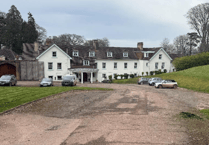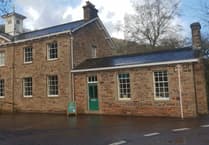TARR Steps, Exmoor’s 500-year-old clapper bridge, has just been restored after some of the stones were dislodged in a recent flood.
The repairs by Crestmoor under the supervision of Somerset County Council involved resetting five of the clapper stones which make up the walkway across the River Barle.
They came loose because of damage from woody debris such as sections of felled trees, fencing stakes and even railway sleepers in the river.
Now a workshop on managing riverside trees and wood debris is being planned by Exmoor National Park Authority with support from the Environment Agency.
The last time the bridge had to be substantially rebuilt was four years ago, after the disastrous floods of December 2012.
But Graeme McVittie, from Exmoor National Park Authority, said it is not the water that does the damage – the clapper stones are displaced by large volumes of timber which become mobile in the Barle in extreme flood conditions.
He said that over the last four years, the authority has invested time and money in the management of riverside trees.
The aim was to help reduce the risk of timber being caught up in flood water and causing damage downstream.
However, said Mr McVittie, after the most recent damage at Tarr Steps it was notable that much of the timber caught at the bridge was from trees that seem to have been felled and left on the flood plain somewhere further upstream.
Also among the debris were fencing stakes and old railway sleepers, causing obvious hazards.
He said the planned workshop would focus on existing best practice guidelines – and, where necessary, develop new ones.
He added: “Woody debris is often generated from the otherwise welcome management of woods, hedges and bank-side trees along our watercourses.
“We hope to build on the good work done by others in this area, and we also hope that it will encourage responsible management by everyone on Exmoor who has an interest in our river systems.”
Photo: Rob Wilson-North/ENPA




